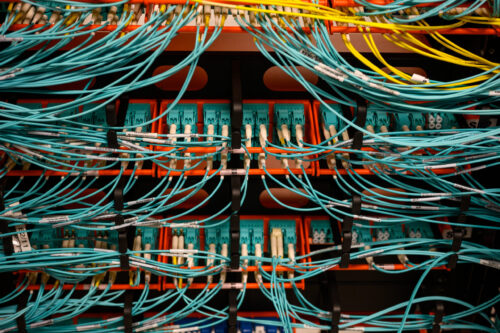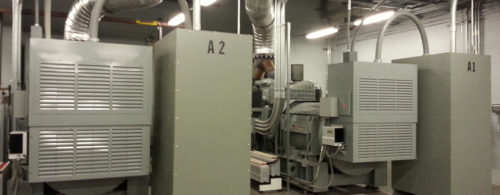Effective power management
Recent advances in both microprocessor-based monitoring and control devices and computer networking have expanded the range of power monitoring equipment available and improved the functional capabilities of these devices.
Recent advances in both microprocessor-based monitoring and control devices and computer networking have expanded the range of power monitoring equipment available and improved the functional capabilities of these devices. The result is a significant new potential for increasing power system reliability while simultaneously decreasing system operating costs. These advances, along with deregulation, are causing a growing number of plants to develop comprehensive new energy management strategies that help them maximize valuable energy resources.
While most plants recognize the importance of energy management, their success addressing the issue varies. Properly controlling a power system is often perceived as being too time consuming, inefficient, and expensive to be practical. Much of this perception stems from the past, when adequate system monitoring equipment simply was not available:
– Monitoring devices were limited and analog based
– Information they provided had to be gathered manually
– There was no way to interconnect devices to collect and analyze pre and post-fault system data or to assess power factor.
As a result, power system management functions, such as allocations, were often inaccurate at best, and maintenance functions were often performed unnecessarily or not in time to prevent costly malfunctions.
Power management basics and benefits
What is power management? In its most basic form , power management can be defined as “optimum continuity of power” — making sure the highest quality power is available where needed, when needed, in the right amount, at the best possible cost, all of the time. Truly effective power management is closely tied to some type of energy management program , or formal, systematic approach to monitoring and controlling energy resources.
At the heart of the energy management program is the power monitoring system , also known as the power monitoring and control system (PMCS). A well-designed power monitoring system provides:
– Usage monitoring to track and analyze all aspects of power consumption (kW, amps, volts, etc.)
– Power monitoring to protect the distribution system, via relays, power breakers, and other devices, against power outages, fault conditions, overloads, and downtime
– Quality monitoring for tracking and analyzing harmonics and disturbance information to ensure the power quality of the distribution system
– Power factor status monitoring.
Being able to gather and analyze critical system data in, or close to, real time enables personnel to be proactive when making decisions that affect the power system. This approach is key to effective energy management.
A well-planned, ongoing energy management program based on a modern power monitoring system provides these and other benefits:
– Identification and correction of equipment problems beforehand to prevent power outages and damage to distribution system components
– Analysis of the power supply (its source and quality) and demand patterns to develop appropriate load management strategies
– Optimization of the distribution system to improve phase imbalances and to maximize power availability
– Potential for automating billing and sub-billing for accurate cost allocations by department, process, etc.
Energy management system components
The “nuts and bolts” of the power monitoring system and energy management program are the energy management system components : The state-of-the-art integrated hardware and software products used for system monitoring and control. Energy management system components fall into three basic groups.
Monitoring, control, and protection devices — The various meters, trip units, relays, and other equipment that perform such functions as controlling the source and flow of power, monitoring power quality, and protecting the distribution system against overloads.
Computer networks — RS-485, RS-232, or Ethernet TCP/IP-based digital interconnects used to connect the monitoring, control, and protection devices to a centralized computer(s) so that power system data can be collected and analyzed in real time.
Energy management software — Applications that collect data from the monitoring, control, and protection devices via the computer network and report this information in an easy-to-understand, highly graphic manner on the centralized computer display(s). Typically, such software can be customized to meet facility-specific system reporting requirements.
In some cases, the energy management system components also include programmable logic controllers . These products are often used as supervisory devices in control and gateway applications.
Implementing the power management program
As with any successful program, getting a power management agenda off the ground involves careful planning and execution. The basic steps begin with establishing program goals and the strategies for achieving these goals: What level of system monitoring and control is needed? What analysis is to be performed (allocation, power quality, usage reduction, etc.)? What are the desired system comparison and forecasting capabilities?
Goal setting is followed by a review and, if necessary, development of the distribution system’s single-line diagram. This diagram helps identify the best locations for placing the energy management system components needed to accomplish program goals.
Next is design and implementation (or upgrading) of an adequate power monitoring system. At this stage, all necessary monitoring, control, and protection devices are installed at their predetermined locations.
Installation of the energy management system computer network then links all devices together. Sometimes, a network suitable for energy management may already be installed (i.e., it was installed previously for purposes other than energy management). In such a case, network installation may not be a major task or expense.
After all system hardware is in place, the energy management software can be installed and configured. This phase includes:
– Designing and setting up the power system monitoring “forms,” which are the computer screen displays used for data presentation and analysis
– Defining all monitoring, control, and protection devices within the energy management software database
– Establishing the communication link between all system hardware and software components.
With all energy management system components in place, the system can now be commissioned. Commissioning involves reviewing all energy management system hardware and software to ensure proper operation and functional coordination between system components.
Finally, power system personnel are trained in energy management program operations. This training covers such areas as using energy management system equipment, daily and weekly energy management procedures, data interpretation, preventive maintenance, and appropriate responses to specific situations.
Energy management today and tomorrow
A power management program of the scope discussed here represents a significant investment of time and money to hire a consultant, plan the program, install the equipment, and train personnel. The question must be asked, “Is it worth it?” Naturally, results vary. But for most plants, the potential payback — in terms of cost savings, power system integrity, load monitoring and balancing, preventive maintenance, and allocations capability — makes the answer a definite “yes.”
It’s also important to remember that as the effects of deregulation begin to make an impact, the most certain fact about the energy market is that change will continue to occur. And no one can predict exactly how these changes will eventually shape tomorrow’s energy market.
— Edited by Richard L. Dunn, Chief Editor, 630-320-7141, rdunn@cahners.com
More info
The authors may be contacted for additional information regarding power management. Contact Bill Whitehead at 770-871-3846; e-mail: bill.whitehead@sea.siemens.com. Contact Dan Steiner at 419-222-6048; e-mail: dlsteiner@dlsteiner.com.
Additional articles on energy management can be found on Plant Engineering Online at www.plantengineering.com.
Key concepts
Monitoring is at the heart of any power management system.
Hardware devices, computer networks, and energy management software must be fully integrated.
For most plants, potential payback from a power management system makes it worth the investment.
Choosing an energy management consultant
B ecause of the complexity of most power systems, energy management is itself complex. It requires complex field hardware to gather system data. And it requires a powerful computer program capable of arranging and displaying the data in a time frame suitable for making informed decisions. Most companies are best advised to secure a qualified consultant when setting up their energy management program.
Like so many other areas, however, the qualifications of those in energy management consulting vary widely. Following are some questions to ask when evaluating if an energy management consultant is suited for your implementation:
– Is the consultant experienced in designing power distribution systems?
– Does the consultant have a broad background in power consumption issues?
– Does the consultant have a “field knowledge” of power monitoring, control, and protection devices from various manufacturers? This factor is key if your application requires implementing devices from several different manufacturers or integrating new and older equipment.
– Does the consultant have broad computer experience: installation, networking (including cabling), application software development, data communication? Remember that computers and networking are the backbones of the modern energy management program.
– Can the consultant identify early on any potential power quality and electrical system problems and use load studies, fault analysis, and other tools to deal with these problems?
– In addition to installation, setup, and commissioning, does the consultant provide other services such as the training of energy management personnel?
– Does the consultant offer after-installation support such as maintenance contracts, troubleshooting and emergency service, modifications and upgrades, remote monitoring, or related services (e.g., power quality studies)?
The more questions that can be answered, “yes,” the better. In general, the ideal situation is to find a full-service energy management consultant that can provide turnkey-level solutions. This individual is your best insurance of implementing an effective energy management program efficiently and quickly.
Do you have experience and expertise with the topics mentioned in this content? You should consider contributing to our CFE Media editorial team and getting the recognition you and your company deserve. Click here to start this process.



